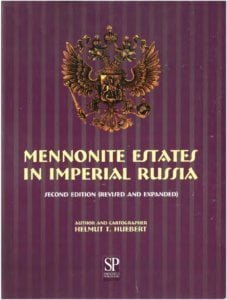Mennonite Estates in Imperial Russia
This book is an index of Mennonite estates in Imperial Russia – the time period from 1813 to about 1920. It does not explain all the intricacies of the development of each of the estates; it does not decry or defend them. By this time it is a study of something which has disappeared almost a century ago. Some have decrepit buildings remaining, but of many estates there is now nothing left except open fields. Despite these circumstances it is hoped that this index can help people in the study of something which seems to be increasingly significant to many – a search for their roots.

